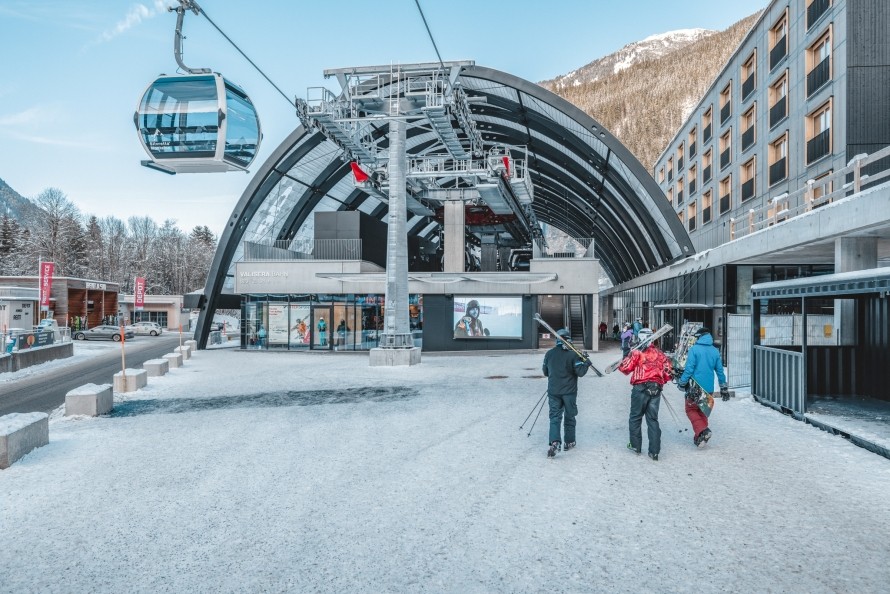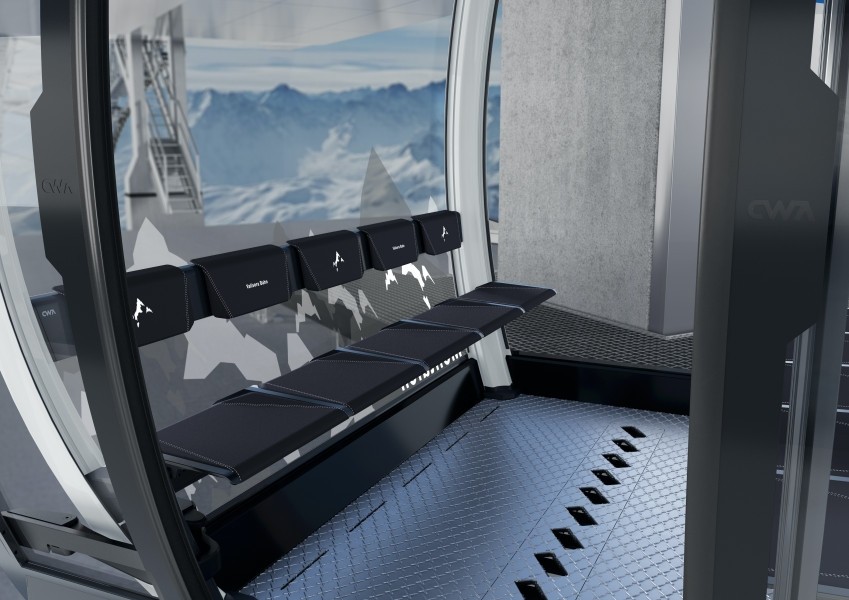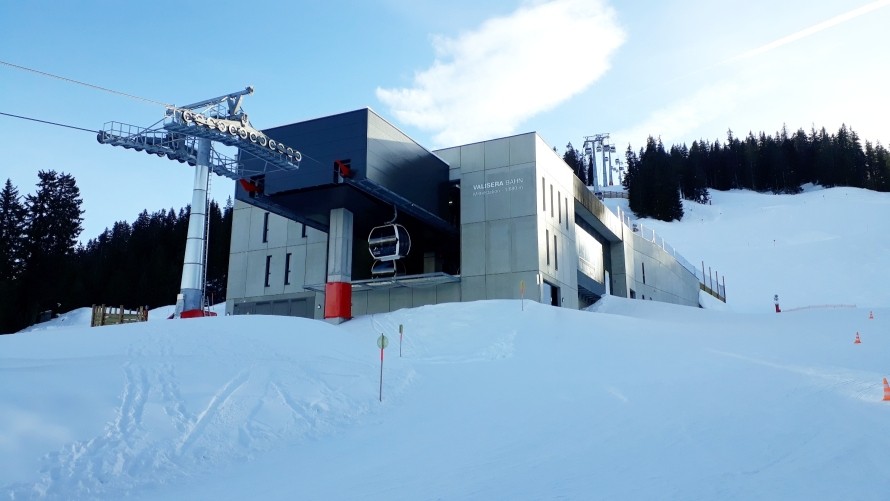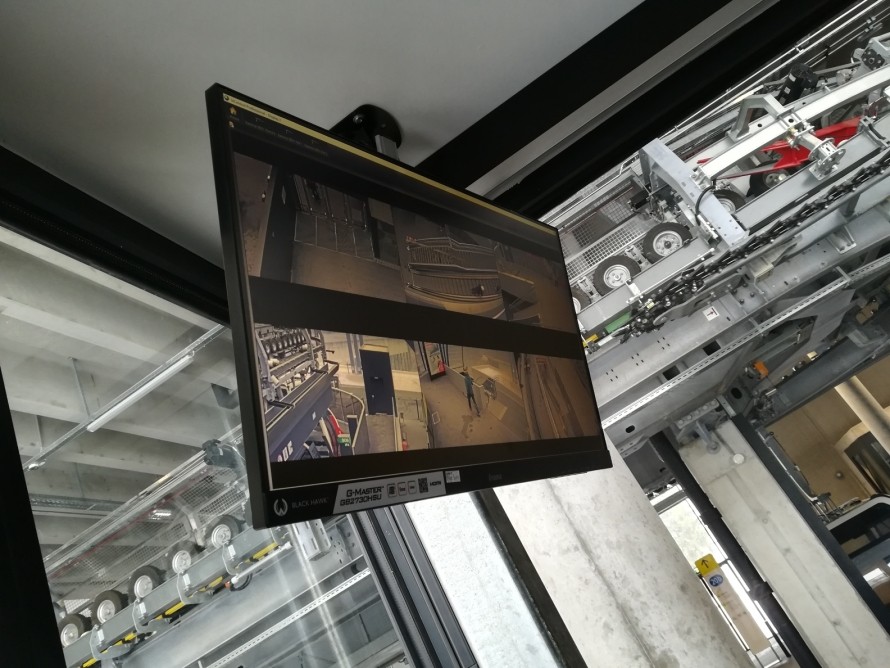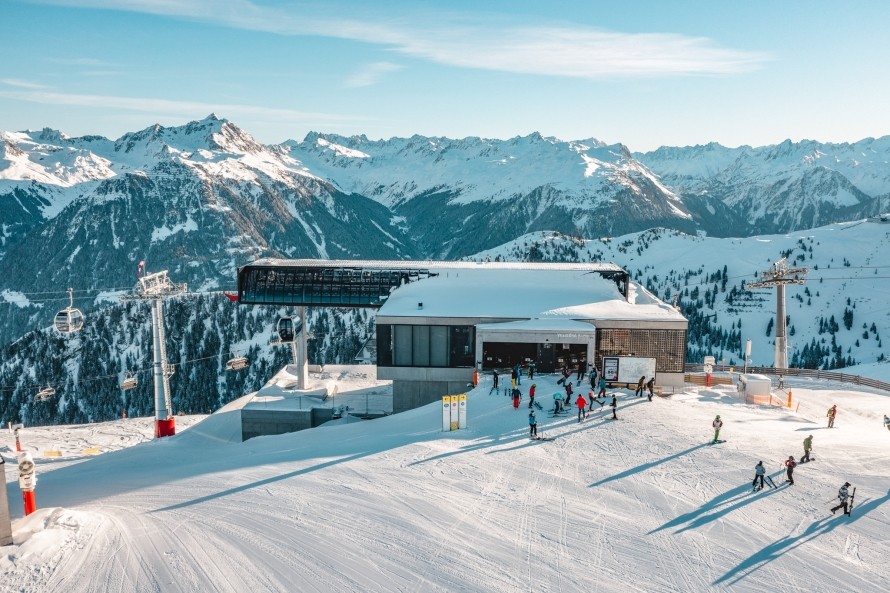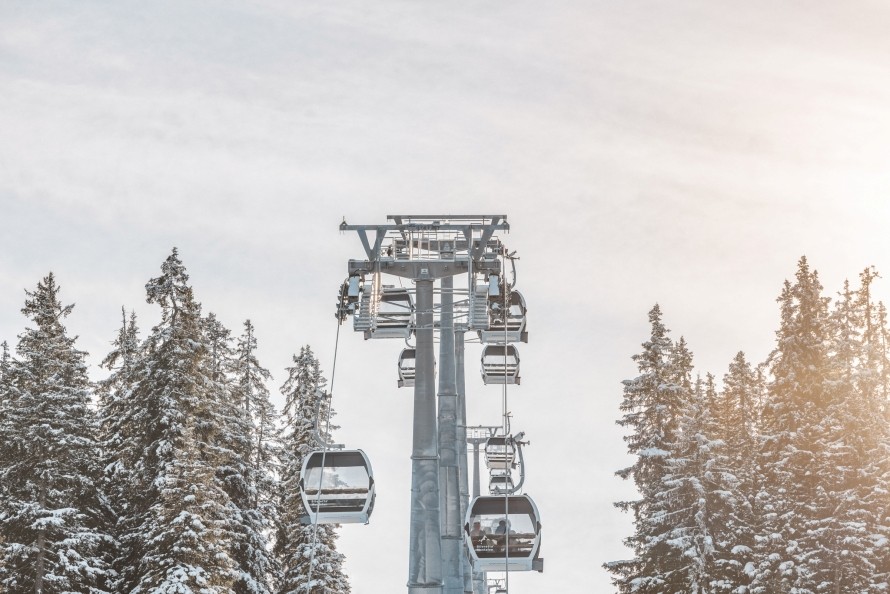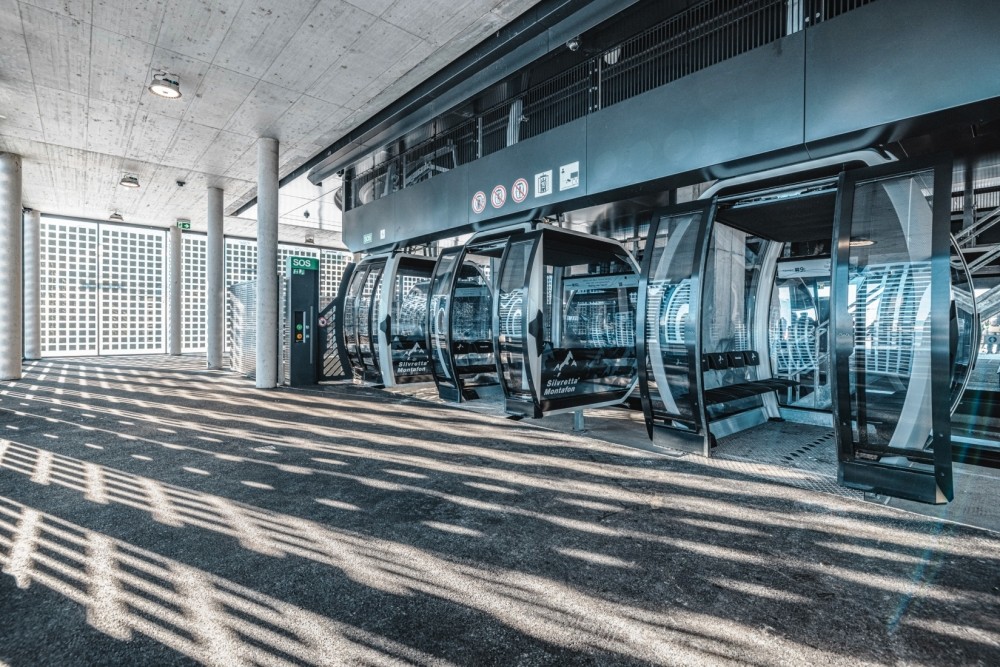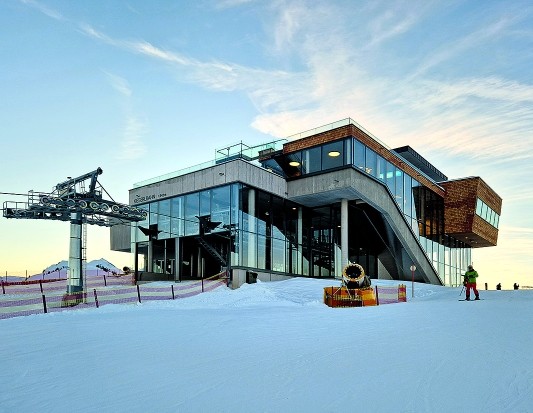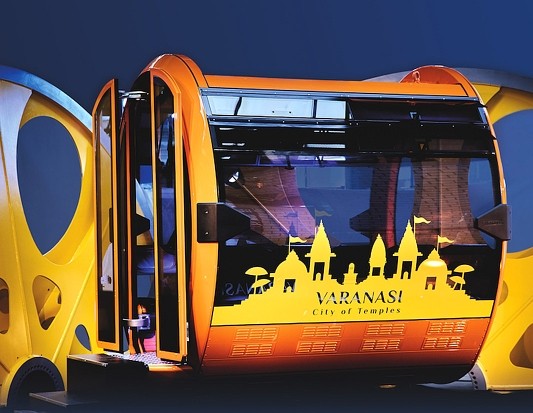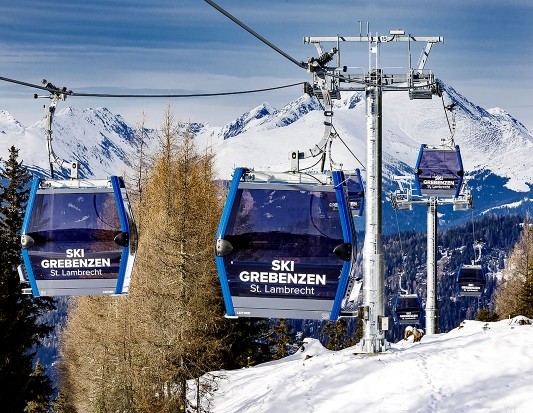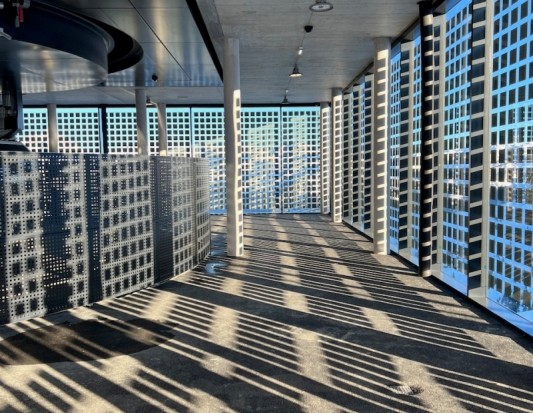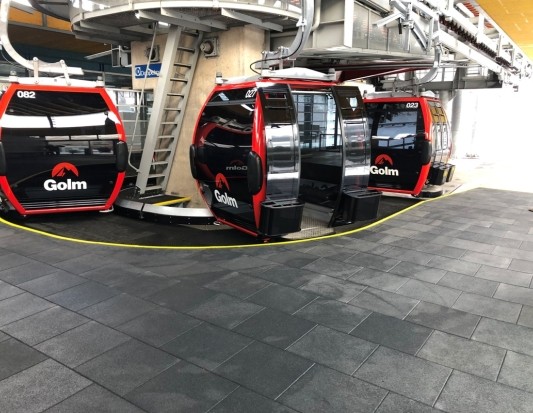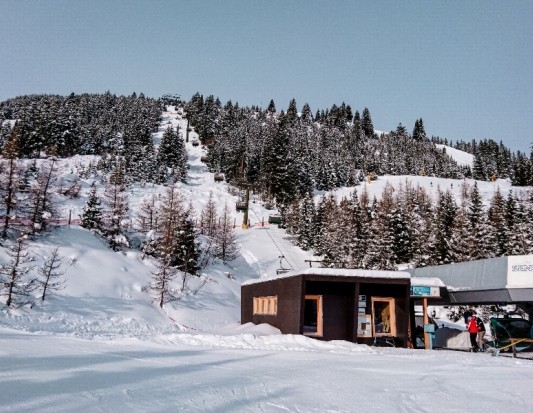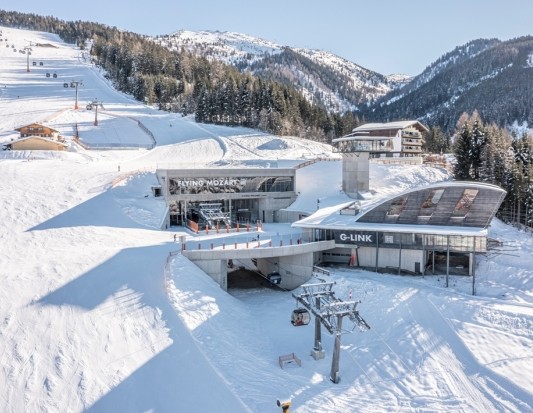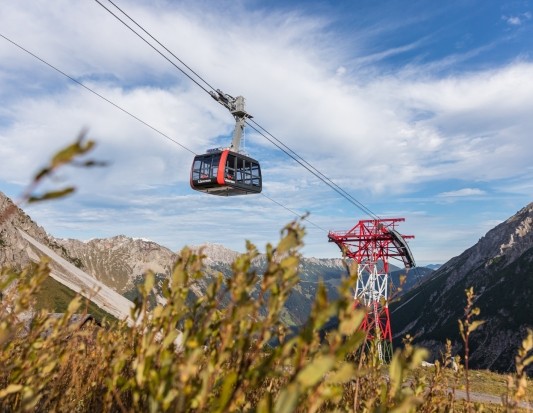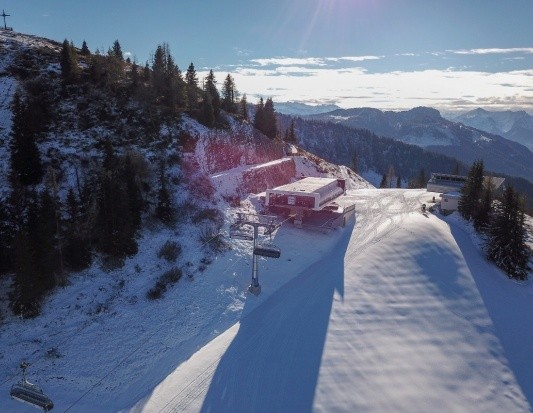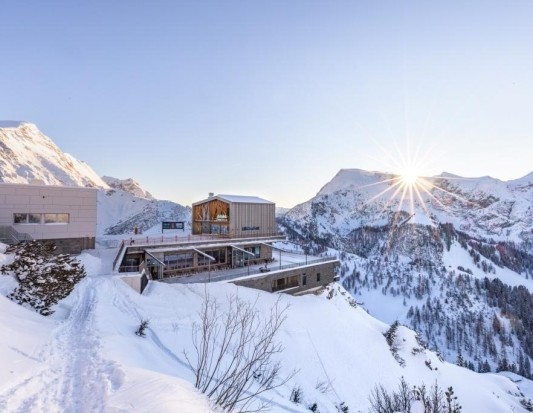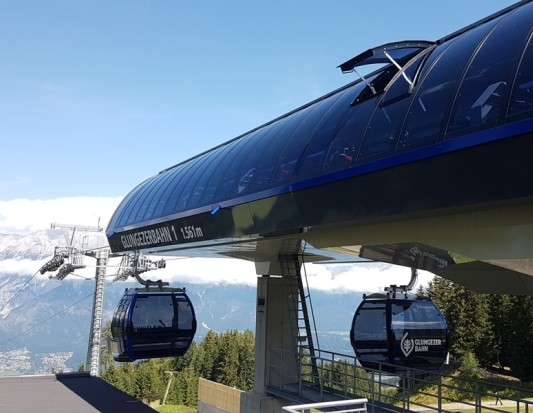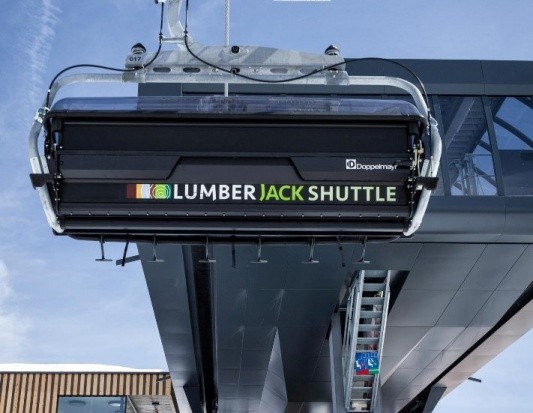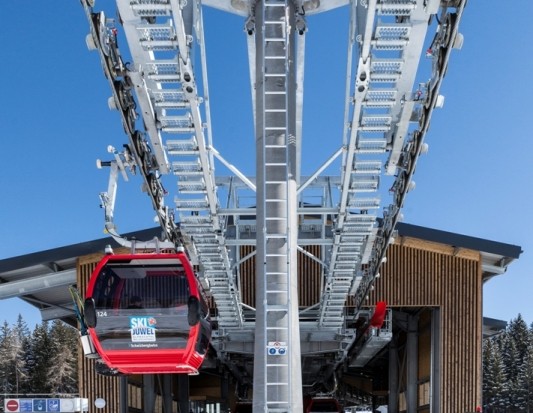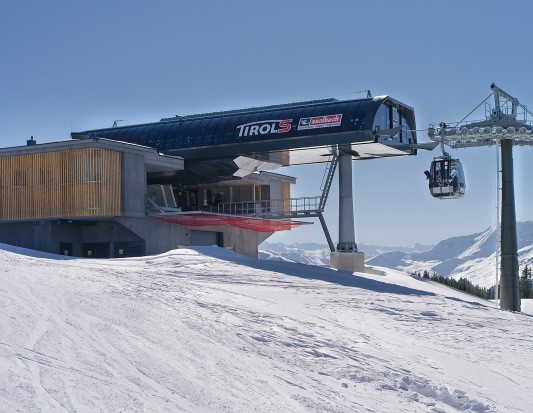10MGD Valisera ropeway
St. Gallenkirch
Autonomous into the future
For 40 years, the old Valisera ropeway with its 6-seater cabins used to connect the two ski resort sections Nova at St. Gallenkirch and Hochjoch at Schruns located in the Vorarlberg Montafon. Since the winter of 2021/22, the high-performance ropeway that was also one of a kind when it was constructed back in 1981 has found a suitable replacement in the form of Austria's first autonomous 10-seater cabin ropeway. The replacement was realized in just a few months based on the existing line and station locations - despite significantly expanded dimensions, traffic optimization and globally new ropeway technology.
The initial situation
The Vorarlberg tourist destination Silvretta Montafon has combined the two ski areas Nova and Hochjoch since 2008 and is one of the largest ski areas in Austria with more than 140 kilometres of slopes and 35 ropeways. The joining of the two was also sealed in practice in 2011 with the construction of the Grasjochbahn near St. Gallenkirch. Directly opposite the new 8-seater ropeway from Salzmann Ingenieure the Valisera ropeway, which had been constructed back in 1981, transported passengers to the Nova area at an altitude of over 2,000 meters above sea level.
The first considerations for a more contemporary reconstruction of the time-honoured 6-seater ropeway were already made in 2008. Seven years later, these plans were rolled out with an alternative route and an inclined elevator to the Vermiel Valley. In 2017, when the complex project failed, Salzmann Engineers assumed responsibility for planning a 10-seater cable car based on the existing route and stations.
In addition to increasing the capacity from 2200 to currently 2800 and in the final implementation to up to 3600 passengers per hour, the new Valisera ropeway sets an example worldwide as Austria's first autonomous ropeway. This also extends to the valley station, which has been designed as a multifunctional centre: Silvretta Park Montafon accommodates a sports store, a ski school, a market hall, staff rooms and a hotel complex with more than 100 rooms, restaurant and a bar. In addition, there is an underground parking garage offering 50 E-charging stations and a total of 600 parking spaces. As with the Grasjochbahn, the Innsbruck-based firm Obermoser + Partner Architekten was responsible for this terminal with its spectacular foil wall. The middle and top stations, designed by Salzmann Ingenieure and Lang Vonier Architekten, were at least as impressive.
After a proud 40 years of operation, the first excavators rolled in April 2021: Demolition, construction and reconstruction took their course. In a record-breaking eight and a half months, the entire lift with new supports and stations was completed in mid-December - despite the pandemic and within budget. Right on time for the start of the 2021/2022 winter season, the first unassisted guests boarded the lift, and 14 minutes later they got off again at 2108 meters above sea level - an unforgettable experience.
Start of a new ropeway era
At a total investment volume of 70 million euros, the new construction of the Valisera ropeway, including the construction of the Silvretta Park, is one of the largest development projects in Vorarlberg's winter sports history and was also the largest state construction project in 2021. Approximately one-third of the costs were for the innovative ropeway technology. From a legal point of view, the new construction is a change of purpose. Since the location of the ropeway and stations was unchanged, only an extended concession of the existing one was required. "The valid contracts finally laid the foundation for a timely realization before the expiration of the concession. By maintaining the alignment, we were able to include the two basement levels of the top station in a reconstruction concept, thereby saving costs and resources," reports planner Stephan Salzmann.
The result is impressive: The Valisera ropeway isn't just Austria's first autonomous ropeway, it's also the world's first two-section ropeway of its kind. The technological underpinning of the innovative transport system is Doppelmayr's AURO system (Autonomous Ropeway Operation). "With the new Valisera ropeway, our guests are already witnessing the future of international ropeway technology. The state-of-the-art ropeway guarantees fast and frictionless transportation, provides maximum service and comfort, fits perfectly into the mountain landscape and also impresses with its sustainable and aesthetic design," emphasizes Martin Oberhammer, Managing Director of Silvretta Montafon Holding.
Middle station acting as a hub
The heart of the Valisera ropeway is located at 1630 meters: the mid station with the so-called Ropeway Operation Center (ROC) is the control center of the entire ropeway. In the command or control room, one person is responsible for the uphill and one for the downhill. In the valley and summit stations, the passengers work by themselves, but always under the watchful eye of experts.
During the implementation of the pioneering system, the planning team led by Stephan Salzmann also had to solve fire protection and safety issues. "Autonomous operation required an additional control system and special building technology. In this way, elevators or escalators can be controlled externally in emergency situations and entrance gates can be closed remotely," he clarifies. Only in case of a disruption will the operating staff of the unmanned stations have to intervene.
In addition to the command center, the completely redesigned mid station also accommodates the drive for the two ropeway sections and the large ropeway station. The latter provides more than 2,500 square meters of space for up to 170 cabins.
The most eye-catching visual feature is certainly the wide slope loop on the station's roof. It offers user-friendly access as a repeater up the mountain, direct access to the children's land and a cabin ride down into the valley. "We had to place the ropeway one floor below the platform level of the existing ropeway and embedded it into the mountain. This created a hopper-shaped exit into the mountain. During the summer, the platform fits nicely into the landscape as a green roof," Salzmann relates. While he and his team were responsible for the overall planning of the building, Lang Vonier architects from Schruns contributed the architectural design of the station.
Comfort throughout all levels
Designed to carry ten people instead of six, covered ski racks via the TWISTIN system, heated seats and 40 years of progress, Salzmann relied on a very high cable for the first supports to bring the much taller and wider cabins onto the specified route without additional forest clearance. "The foundations of the supports are almost as high as small houses. We are operating above the tree line here," describes the planner.
The run in the spacious cabins ends at 2108 meters with the spoilt for choice. In the overall redesign of the top station, Salzmann Ingenieure worked with Lang Vonier Architekten to create an ideal starting position for guests. A new intermediate floor now bridges the distance to the ideal exit point directly at the level of the plateau between Valisera Hüsli and Bella Nova.
Proactive sunlight interaction and optimized utilization
Today, passengers are welcomed by a light-flooded hall when they arrive at their destination. The surrounding photovoltaic systems are responsible for the impressive interplay of light and shadow. Incidentally, when the sun shines the majority of the time, these also supply clean electricity for operation. "The Valisera ropeway is an absolute flagship project in terms of technology, architecture, organization and energy - and every ride is a special experience," says a delighted Martin Oberhammer.
While the former middle station was completely demolished and rebuilt on the same spot, the new hill station stands exactly on the walls of its predecessor. "We wanted to recycle as much as possible and also found a sensible reuse for the steel structure of the former platform hall," explains Salzmann. Fitted with a new wooden facade, the old structure has since served as a storage hall for the torrent and avalanche control authority.
Technical data
Ropeway system: detachable 10-passenger gondola ropeway
Length: 2059 + 1955 meters
Altitude difference: 808 + 478 meters
Capacity: 2800 persons/h (final capacity: 3600 persons/h)
Maximum speed: 6,5 m/s
Number of cabins: 128 (final configuration: 168)
Manufacturer: Doppelmayr ropeways
